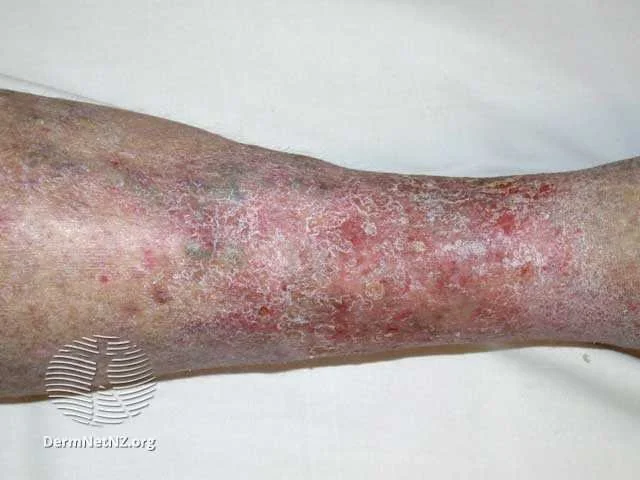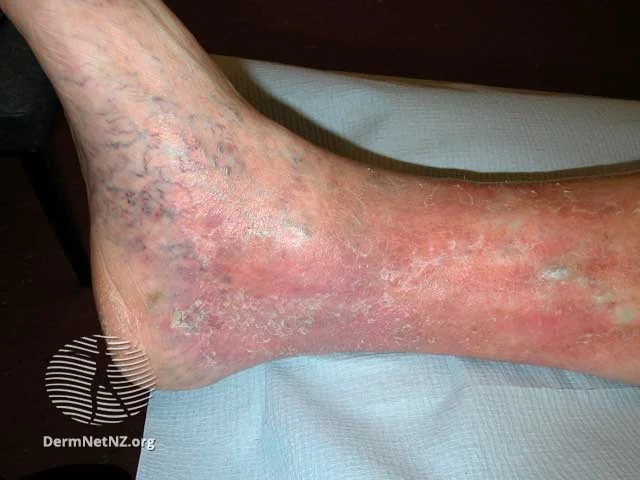
Stasis Dermatitis
Stasis dermatitis shows up in the setting of venous insufficiency. In this case, the broken blood vessels and dermatitis are both prominent.
Credit: DermNet NZ
What is stasis dermatitis?
Stasis dermatitis is a skin condition characterized by a scaly, eczema-like rash typically seen on the lower legs. It commonly affects individuals with a background of venous insufficiency, such as those with varicose veins, spider veins, or edema (swelling) in the lower limbs.
What causes stasis dermatitis?
Stasis dermatitis primarily results from venous insufficiency. Contributing factors include:
Obesity: Excess weight can increase the risk of venous insufficiency.
Previous Pregnancies: Hormonal changes and increased blood volume during pregnancy can affect veins.
Family History: Genetic predisposition might play a role.
The skin in areas affected by venous insufficiency becomes more sensitive, predisposing it to irritation. The lower legs, having fewer oil glands, tend to be drier, making the skin more vulnerable. Misguided attempts to self-treat with topical antibiotics like Neosporin might exacerbate the condition.
What are the symptoms of stasis dermatitis?
Symptoms typically include:
Dry, scaly patches on the skin, mainly from the knee downward.
A localized appearance, particularly if only one leg is affected by venous insufficiency.
Exacerbation of symptoms with increased leg swelling.
Chronic cases might lead to scar tissue development, termed lipodermatosclerosis.
In severe instances, the rash might spread to other body parts, a phenomenon known as an id reaction.
How do I treat stasis dermatitis?
If stasis dermatitis doesn't improve with compression therapy, other treatments include:
Topical Keratolytics: To help remove scales and soften the skin.
Lymphatic Massage: Combined with vascular medicine for enhanced circulation.
Oral Bioflavonoids: Such as Diosmiplex, which might offer benefits.
Pentoxifylline: An oral medication that improves blood flow.
How do I prevent stasis dermatitis?
Preventive measures include:
Compression Stockings: Especially beneficial when standing for extended durations.
Elevating Legs: Propping up legs when resting can reduce swelling.
Weight Management: Maintaining a healthy weight can decrease the risk.
Properly fitted compression stockings, which are easy to wear and remove, can offer significant relief and preventive benefits.
Prominent spider veins and venous insufficiency can result in stasis dermatitis.
Credit: DermNet NZ
Prominent swelling and lymphedema can also lead to stasis dermatitis.
Credit: DermNet NZ



